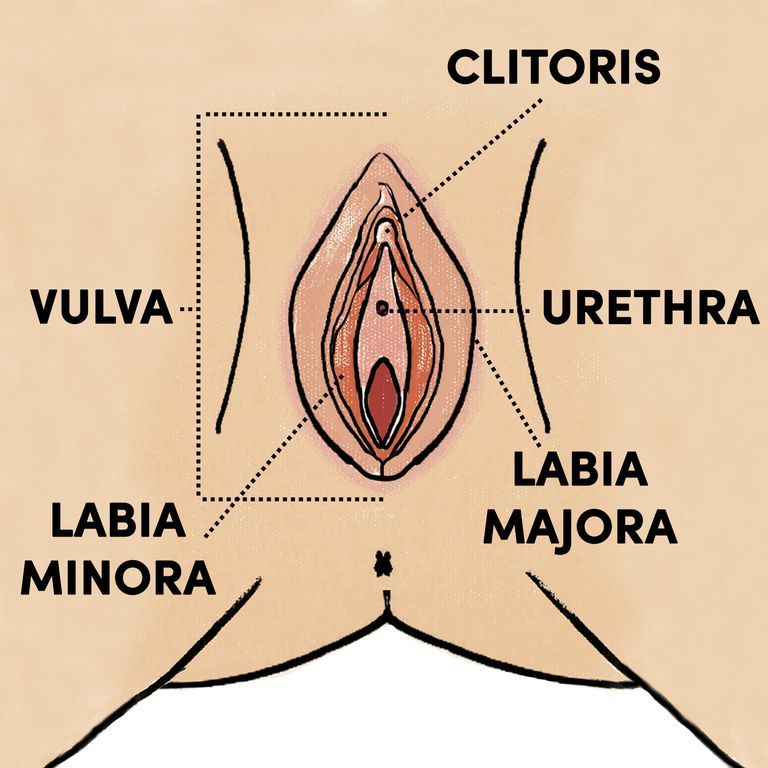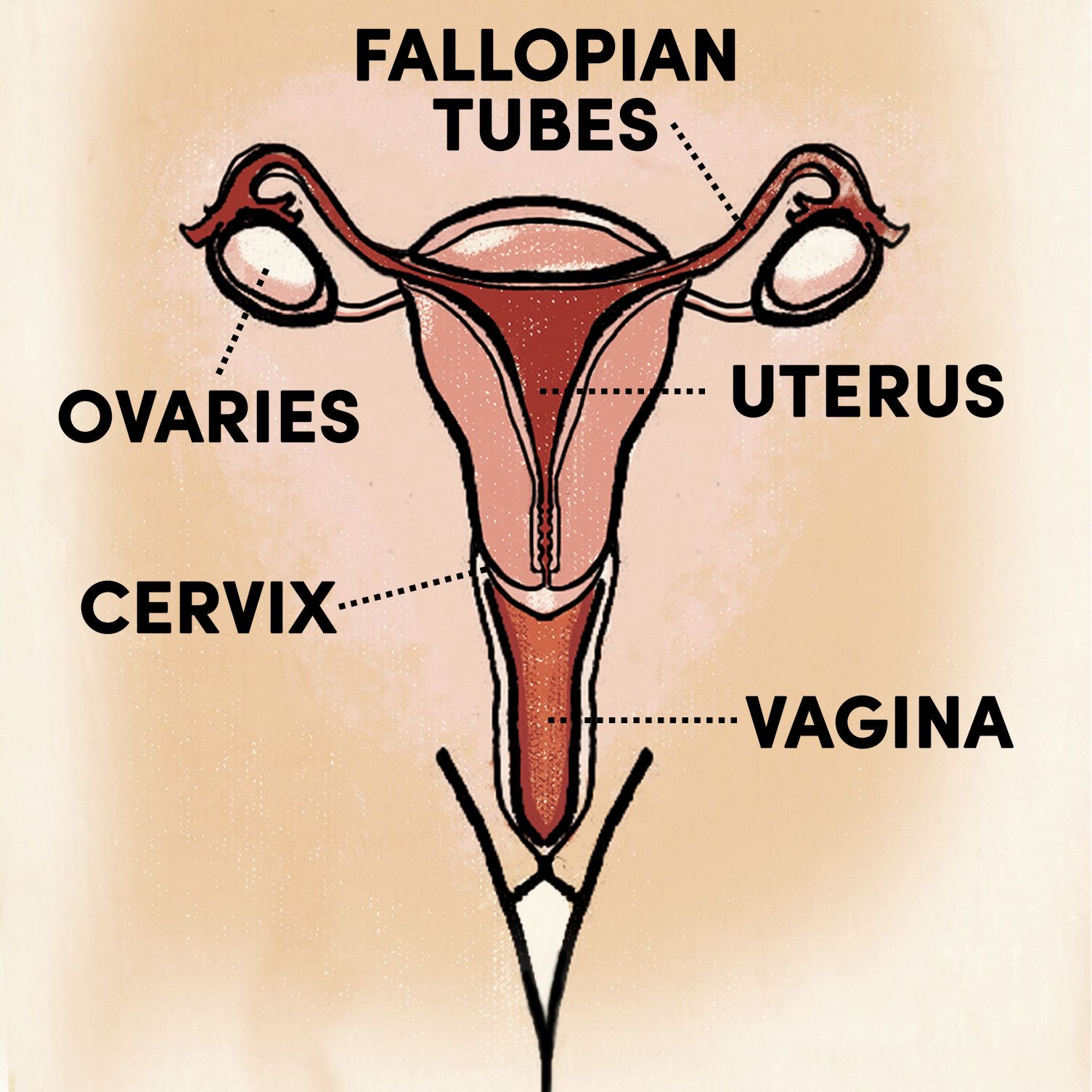Vagina and Vulva Anatomy Explained by Sexual Health Experts

If middle school health class didn’t do a great job at explaining the differences between vagina and vaginal anatomy, here’s what you should know, per experts.
Because no, they’re actually not the same thing!
By Hannah Smothers and Rachel VarinaPublished: Jun 17, 2025 Save Article-
 Proof That Every Vagina (Yours Included) Is Normal
Proof That Every Vagina (Yours Included) Is Normal
Despite popular use, “vagina” isn’t a catch-all term for everything below the belt. The correct word for the external parts is vulva, and yes, there’s a difference.
“The biggest misconception about vulvar and vaginal anatomy is that the terms ‘vulva’ and ‘vagina’ are interchangeable, when in fact they refer to distinct anatomical structures,” says Dr. McBride. “The vulva includes the mons pubis, labia, clitoris, vestibule, and the external openings of the urethra and vagina.”
The vagina, on the other hand, is the internal fibromuscular canal that extends from the vulva to the cervix. It’s where menstrual blood comes out, where a baby exits during birth, and where tampons, fingers, and sex toys can go in.

Katie Buckleitner
2. The only part of the vagina you can actually see externally is the vaginal opening.
Out of the three holes down there (hello, urethra and anus), the vaginal opening—aka the introitus—is the one you probably think of first. It’s where period products go in, where discharge and blood come out, and where penetrative sex can happen.
“These areas—the vaginal introitus and the nearby periurethral region—are actually highly erogenous,” says Dr. McBride. “The introitus plays a key role in both reproductive and sexual health.” Translation: The vaginal opening isn’t just functional; it can be a major source of pleasure too.
Oh, and since we’re here: The hymen—the thin, small piece of tissue at the opening of the vagina—doesn’t necessarily bleed when it tears. And not having one isn’t an indicator of whether or not someone’s had sex. Many circumstances can impact the state of someone’s hymen, and it can wear down over time due to physical activity, tampon insertion, and more.
“The hymen doesn’t just tear and vanish,” says chief medical officer at hers, Jessica Shepherd, FACOG. “It stretches. And while that can cause some bleeding the first time someone has penetrative sex, it doesn’t always.”

Katie Buckleitner
3. There are two sets of labia.
There’s more than one kind of “lip” down there. The labia majora are the outer lips (typically covered with hair after puberty), and the labia minora are the inner lips that sit closer to the vaginal opening. Despite the names, “majora” and “minora” don’t always match up with actual size; labia come in a wide range of shapes, sizes, and colors. “All of this variation is completely normal,” says Dr. McBride. And while some people opt for labiaplasty if their labia cause discomfort, there’s absolutely nothing wrong with how they look (again, unless they’re causing the owner pain or distress).
Functionally, both labia protect the more sensitive internal anatomy from bacteria and other outside invaders, so if you’re a vulva-owner, be gentle with your labia! Avoid scented soaps, skip harsh products, and go easy on any hair removal routine you do (or don’t) follow. Bottom line: They’re there to keep you safe, so treat them with care.
Related Story-  The Expert Fingering Guide You Need Rn
The Expert Fingering Guide You Need Rn
 The Expert Fingering Guide You Need Rn
The Expert Fingering Guide You Need Rn
4. The clitoris has a lot in common with the penis.
The clitoris and the head of the penis actually serve identical purposes: sexual pleasure. “The head of the penis is pretty much anatomically the same as the clitoris,” says Dr. Shepherd. Both contain thousands of nerve endings, which is why they’re so responsive during sex, but the clitoris takes the crown with nearly double the nerve endings. And like penises, clitorises come in all shapes and sizes, from tiny pea to full-on lima bean. All totally normal.
But believe it or not, the clitoris is actually way bigger than it looks. Think: tip-of-the-iceberg energy. The little button on the surface is just the beginning. The clit extends deep into the body, wrapping around the vaginal opening with internal structures (called crura and bulbs) like a wishbone. “The external part of the clitoris is only the tip,” says Dr. McBride. And for the record, clit size has zero bearing on how sensitive someone is. Whether you’re rocking a cocktail weenie or a full dill pickle, it’s all good.
5. The G-spot isn’t exactly what you think it is.
If you or your partner go spelunking inside your vagina expecting to find a tiny magic button labeled “G-spot,” you might be disappointed. It’s not a clearly defined anatomical structure, and most experts agree it doesn’t exist in the way pop culture makes it seem. But that doesn’t mean people aren’t feeling something during internal penetration.
According to Dr. McBride, what many refer to as the G-spot is more likely stimulation of the internal clitoral structures—specifically, the bulbs and crura—that wrap around the vaginal canal. “The clitoris isn’t just a small external nub,” she explains. “It has extensive internal anatomy that can contribute to pleasure.” Basically, what’s often called the G-spot is really more of a G-area, a sensitive zone on the anterior (aka front) vaginal wall where the internal clit gets in on the action.
So while there’s no magical one-size-fits-all button inside the vagina, that doesn’t mean internal pleasure is a myth. It just means the clit is working overtime (again).
6. The uterus and cervix do more behind the scenes than you think.
The cervix is the structure that sits at the top of the vagina, dividing it from the uterus. As Planned Parenthood puts it, it looks like “a donut with a tiny hole in the middle.” And mind you, that tiny hole is actually pretty important. It’s where menstrual blood comes out of, sperm goes into, and it’s what your doctor gently dilates (still, ouch) to insert an IUD. “The cervix plays a vital role in both menstruation and reproduction,” says Dr. McBride. “It also produces cervical mucus, which changes throughout your cycle to either help or block sperm from reaching the uterus.”
Above that is the uterus, aka the womb. It’s a pear-shaped muscular organ about the size of a fist, and it’s where a fetus develops during pregnancy. But even when a person with a uterus isn’t trying to conceive, the uterus itself is still doing the most, i.e., contracting during menstruation to help shed the uterine lining, and lifting up when its owner is turned on.
That last part? It’s called “tenting,” and it literally elongates the vaginal canal to make room for penetration. “Tenting helps reduce discomfort during intercourse and is part of the natural sexual response,” Dr. McBride explains. So the next time you’re at a very specific kind of trivia night, you’ve got this one in the bag.
7. The ovaries, fallopian tubes, and uterus are all in constant communication.
People with ovaries typically have two of ‘em. It’s where all the eggs live, and yes, people with ovaries are born with their lifetime supply. Once they hit puberty, the ovaries start releasing one egg (usually!) per cycle. Ovaries are also in charge of producing hormones like estrogen, progesterone, and even testosterone.
“The ovaries, fallopian tubes, and uterus work together as a unit to support reproductive function,” says Dr. McBride. “From hormone production to egg release and potential fertilization, it’s a highly coordinated process.”
Now, contrary to what middle school health class may have implied, the ovaries don’t politely take turns releasing eggs each month. “It’s not a left-right-left-right kind of thing,” explains Dr. Shepherd. “It depends on which ovary has the more developed egg during that cycle.” Meaning: The left ovary could totally go three months in a row, and the right might be on a break.
Once the egg is released, it travels through one of the fallopian tubes—which acts like a slide—to reach your uterus. Sperm also travels through these tubes to meet the egg, and the whole operation is kind of an anatomical relay race. Bodies! So weird. So cool.
Turns out, the stuff we were supposed to learn in health class is way more nuanced—and fascinating—than whatever teacher who got roped into the job made it seem. Whether this is your anatomy or not, knowing how it works is the first step to ditching shame and leveling up your pleasure (and, tbh, your vocab).
Related Story-  Psst: Here’s What the G-Spot Actually *Is*
Psst: Here’s What the G-Spot Actually *Is*
 Psst: Here’s What the G-Spot Actually *Is*
Psst: Here’s What the G-Spot Actually *Is*
Discover SextoyBG.com, your go-to resource for DIY pocket pussy guides. Learn step-by-step how to make a pocket pussy, pussy pocket, and homemade pocket pussy safely and creatively. Our tutorials empower you to craft your own unique pleasure device.
This site only collects related articles. Viewing the original, please copy and open the following link:Vagina and Vulva Anatomy Explained by Sexual Health Experts











































































